Any gardener, sooner or later, on his site meets pests that affect the crop. Sick plantings lose their strength and, in the absence of effective measures to combat pathogens, may die. Powdery mildew is one of the most common ailments that gardeners face. The editors of the site "bestx.htgetrid.com/en/" have prepared for you an overview of the best powdery mildew remedies for 2020.
Content
Symptoms and causes of the disease
Powdery mildew is a fungal infection that is provoked by pathogenic microorganisms.
The disease is caused by various types of pathogenic fungi:
- Fruiting trees and shrubs are affected by Sphaerotheca mors;
- For flower crops, the class of organisms Sphaerotheca pannosa is dangerous;
- Cereals are susceptible to attack by the fungus Erysiphe graminis;
- Erysiphe cichoracearum and Sphaerotheca fuliginea are dangerous for pumpkin crops.
The disease is very insidious. First, the plant is depleted, then it rots and dies.
Signs of illness
The characteristic symptoms of the disease will be the appearance of a fluffy white coating on the surfaces of leaves, stems or young shoots. The focus of infection is in the soil, so the first signs of infection can be seen on the lower part of the plant (in the area of leaves close to the ground, whitish spots with a diameter of 0.2-0.4 mm appear). Further, the plaque spreads higher. The first stage is the appearance of white spots, then fungal spores mature and drops of liquid form on the surface of the spots. After that, the whitish bloom becomes denser and becomes grayish with small black dots.

If you look at these formations under a microscope, you can observe a dense web of mycelium - mycelium filaments that are constantly growing. Reproduction of mycelium on planting disrupts the process of photosynthesis, which leads to impaired development. Growth slows down or stops altogether, leaves die, buds do not bloom, young shoots look defective.
On fruit trees and bushes, in the presence of a disease, wood does not form on young shoots, as a result of which the plants do not tolerate frost well and often die in winter.
The reasons
Dew itself is excess moisture condensed from the air, which appears on surfaces cooler than the temperature of the atmosphere. It forms on the leaves and tips of the grass, mainly in warm and calm weather.
Powdery mildew spores are not active in hot and sunny climates. Reproduction takes place in high humidity and cool weather. The most favorable environment for the development of infection is soil saturated with nitrogen. Fungal spores are airborne and waterborne.Once on the plant, the fungus quickly spreads over the entire area, while the smallest drops of liquid are released, so the infection is called powdery mildew.
The factors that provoke the appearance and development of the disease include:
- Improper watering (excessive flooding or, on the contrary, lack of moisture);
- Neglect of disinfection measures (when infected plantings are already present on the site, without observing the measures for disinfecting working tools and hands, it is easy to transfer the disease to still healthy plantings);
- Too dense planting of crops, which prevents the free passage of air between the plants.
Types and methods of struggle
Prevention
It is extremely difficult to cure a fungal infection in an advanced form, and in many cases it is impossible. Therefore, in order to effectively combat the spread of the infection, preventive measures should be taken first of all.
To protect plants from the spread of powdery mildew, the following steps must be taken:
- Ensure proper watering (you cannot overflow or overdry the soil);
- Be sure to disinfect working tools and hands;
- Use a special seating scheme that provides sufficient distance for the full growth and development of the culture;
- Timely get rid of debris and fallen leaves (fungal spores can go into the ground);
- Avoid excessive thickening of the crowns of fruit trees;
- Destroy weeds (they grow very densely and impede free air circulation);
- Regularly conduct an examination (this event will help to notice the disease at an early stage and get rid of it without major losses);
- Provide proper nutrition using fertilizers;
- Spray the area with a solution of manganese or sulfur 4-5 times in one summer season;
- To prevent the appearance of pests on indoor plants, maintain a favorable indoor climate (regularly ventilate, but avoid drafts). Do not use outdoor soil for planting, it may be contaminated.
- Use nitrogen-based fertilizers in limited quantities (an excess of nitrogen will cause overgrowth of delicate greens, susceptible to infections). It is preferable to use top dressing from potassium and phosphorus;
- Get rid of stagnant water on leaves and in the ground;
- Prevent the appearance of harmful insects (aphids, ash and other parasites are carriers of infection).
Powdery mildew spores can be in the soil and do not manifest themselves in any way for 10 years. To prevent the appearance of a fungal infection, all of the above recommendations must be followed. Failure to comply with these measures can provoke favorable conditions for the activation and development of the disease.
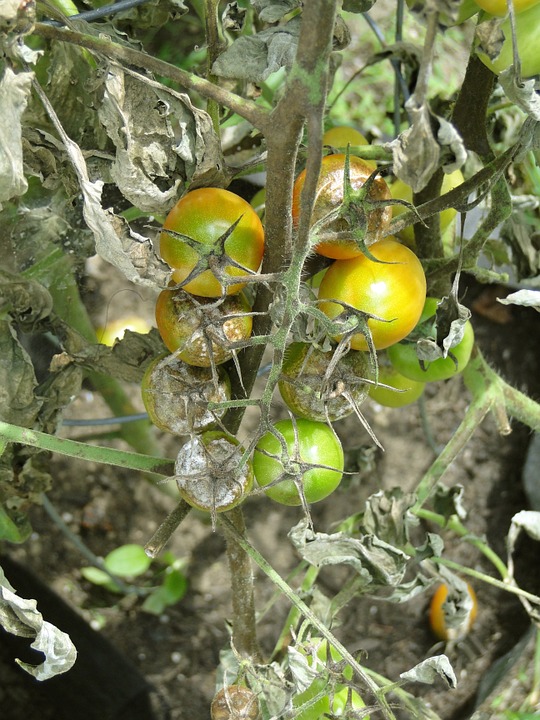
Mechanical methods
When the first signs of the disease are found, the affected plant parts should be removed immediately for treatment. It is necessary to cut off all shoots and leaves that have a white bloom. If the disease manifests itself in flowers, the entire bush is cut off, leaving only the main stem, since all the shoots can be in the affected area. It is also better to replace the topsoil in areas where infection is found and thin out densely growing crops.
The trimmed elements must be burned. It is unacceptable to use this raw material for compost pits, the resulting fertilizer will become a hotbed of infection.
Spraying plants with medicinal preparations
After carrying out measures to remove infected areas, the plantings are treated with medicinal solutions. Spraying should be abundant. It is necessary to moisten the entire volume of the plant with the preparation and qualitatively moisten the topsoil.
Various means are used to treat plants from powdery mildew:
- Biologicals;
- Chemical;
- Folk.
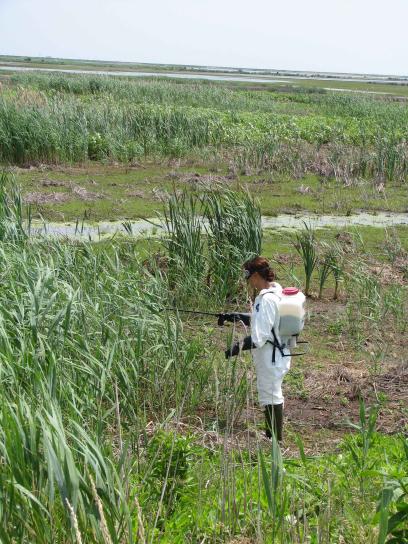
Chemicals
Chemicals or fungicides are recommended for use when the disease is already in advanced form. This type of substance is toxic, therefore, before use, you must carefully study the instructions and strictly follow the recommendations indicated on the package.
Each product has its own characteristics, for different types of plants, instructions for use may be different from each other. For example, when applied to cucumbers, the recommended proportions for the solution will be one, and when applied to grapes, others. It is necessary to spray the plant completely, even if a small area is affected. You should also think about your own safety, when processing you need to use a suit that will prevent the substance from getting on the skin.
The rating of high-quality chemicals according to buyers for 2020 looks like this:
Fungicide for powdery mildew and rust "Topaz" produced by the Russian company AVGUST
The average price is 125 rubles.
It is used on fruit and berry crops. With proper processing, it completely destroys the focus of infection, and also has preventive properties.
Advantages:
- Quick result, mycelium growth stops just 2-3 hours after spraying;
- Rapid absorption by the plant, which prevents the risk of the preparation being washed off by rain.
Disadvantages:
- Toxicity.
"Forecast" for powdery mildew Green Belt 10ml
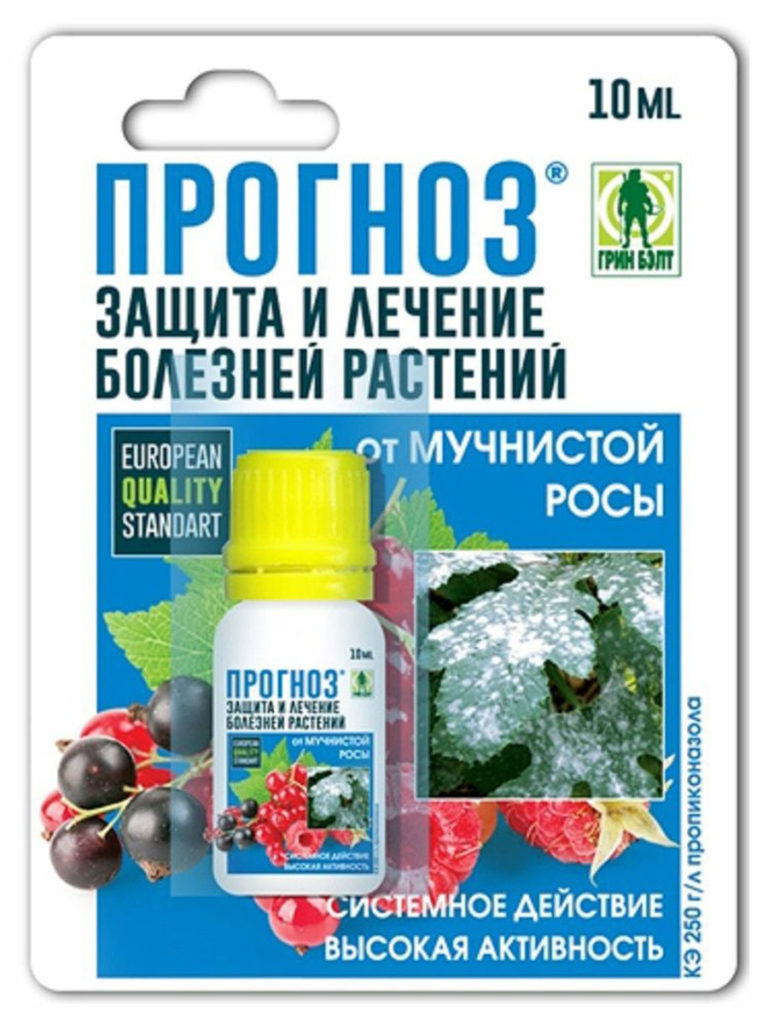
Produced by Green Belt, sold at a price of 104 rubles.
Description of the drug:
When used against a disease, the activity of the solution is 3-4 weeks and decreases during periods of high humidity. An instruction is attached to the solution, in which it is described in detail how to get rid of powdery mildew using the "Forecast".
Advantages:
- Contains a new high performance substance;
- It has a complex effect: therapeutic, prophylactic. A drug with a protective function against the further spread of infection.
Disadvantages:
- Adverse effects on plant health.
Fungicide against diseases, against powdery mildew and ticks "Tiovit Jet" in a dosage of 30 g of the AVGUST brand
Average unit price - 28 rubles.
The tool is used to combat powdery mildew on an apple tree, on a pear, on currants, on gooseberries, on roses in the open field. The basis of the solution is sulfur. Combines the characteristics of micronutrient fertilizer, fungicide and acaricide.
Advantages:
- Good and fast absorption by plants;
- Highly effective protection;
- Non-toxic when used correctly.
Disadvantages:
- Short-term activity (7-10 days).
Discor 10ml. brand "Your economy"
The approximate cost is 151 rubles.
It is a systemic fungicide for the protection of fruit plants. The duration of the protective properties after treatment is approximately 20-30 days. The active substance Difenoconazole has a wide spectrum of action, inhibits the development of pathogenic microorganisms.
Advantages:
- When storing the fruit, it blocks the development of the disease;
- Does not cause burns;
- It can be used at all stages of development: from flowering to fruit ripening.
Disadvantages:
- Toxicity
What should you pay attention to and what mistakes can you make when choosing a drug to fight fungal infections?
First of all, it is the fact that all chemicals are toxic. Therefore, if the disease is in its initial stages or treatment is carried out as a preventive measure, preference should be given to solutions of biological origin. In addition to the toxic effect, the following disadvantages of fungicides can be distinguished:
- Possible dropping of the ovary after processing;
- Reducing the intrinsic protective properties of plants;
- Slower growth due to poisoning;
- Destruction of useful fauna;
- Harmful effects on pollinators.
The only advantage of the use of chemicals is the quick and reliable disposal of the focus of the disease and the prevention of a new outbreak of infection in the treated area before the end of the summer season.
The best manufacturers of powdery mildew control chemicals today are AVGUST and Green Belt.
Biological preparations
Products based on live microorganisms (bacteria, bacterial viruses) are an excellent alternative to harmful chemicals. The popularity of models of biological products is explained by the fact that such funds have a wide functionality that can be directed not only against plant diseases, but also provide crops with protection and nutrition. You can also purchase popular models of drugs based on entomophages and acariphages (beneficial insects). The principle of action of such agents is based on the suppression and destruction of the mycelium of the fungus by living organisms that are part of the drug.
The indisputable advantage of using biological products against plant diseases is their safety. The disadvantages of such drugs are not very high, in comparison with chemical ones, the effectiveness, the processing must be carried out several times, according to the instructions.
Feedback and advice from experienced summer residents allowed us to compile a rating of biological solutions to combat powdery mildew. According to gardeners, the best biological preparations are:
Microbiological preparation "Fitosporin-M"
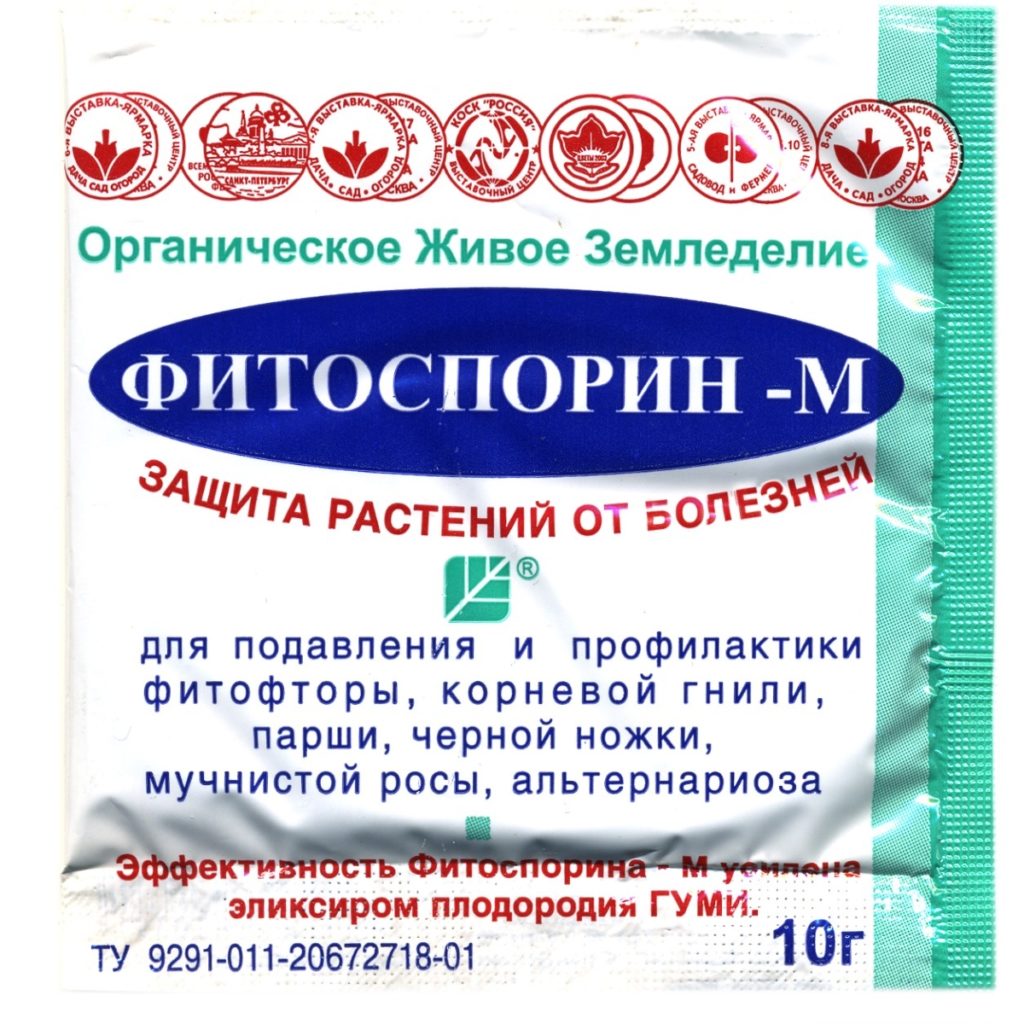
The approximate cost of new items - 159 rubles. for 10 g of funds. It has a complex protective effect against fungal bacterial infections.
Advantages:
- Safety.
Disadvantages:
- High cost (when carrying out preventive measures, it is necessary to process the entire area of the site, 15 ml of the product is enough to process 1 square meter of soil).
Bactericide "Gamair"
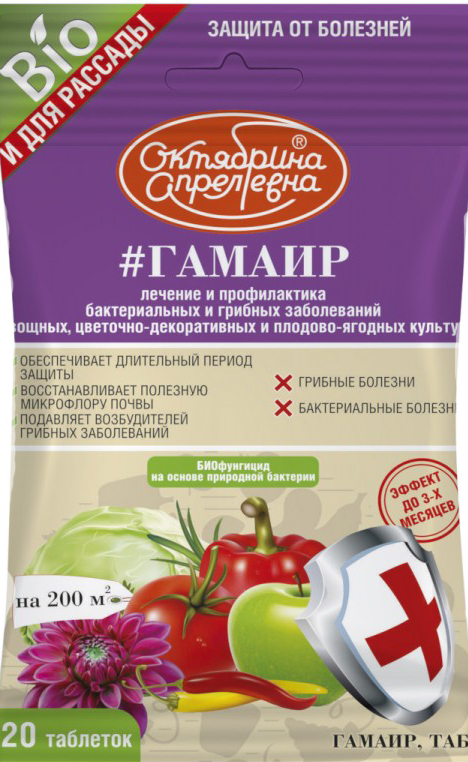
The average cost of a package is 85 rubles.
Available in tablet form. The period of protective functions is up to 20 days. To maintain the defensive properties, the solution is recommended to be used every 7 days.
Advantages:
- Safety.
Disadvantages:
- The need for frequent use (1 time per week);
- Low efficiency when used outside of a complex with other drugs.
"Alirin-B"
The approximate cost of the funds is 85 rubles. per packing.
Natural bacteria in the preparation actively suppress the development of fungal spores.
Advantages:
- Guaranteed results from the first application;
- Restoration of beneficial soil microflora;
- Not addictive.
Disadvantages:
- Cannot cope with severe infection.
All powdery mildew medications, included and not included in the review, can be ordered online in the online store or purchased at any retail specialty stores. Both inexpensive and expensive options are presented on the market.
The selection criteria for each consumer is different. First of all, it is necessary to decide what exactly the substance is being purchased for, and only after that make a decision: which drug is better to buy. Further, you can conduct an analysis: how much the selected product costs on different sites.
Folk remedies
According to many gardeners, folk remedies are effective, and, most importantly, the safest. In addition to the fact that the options for such solutions are budgetary, they are made independently, that is, the materials used to make the medicine are known and are not dangerous to the health of either a plant or a person. Next, consider what you can cook at home and what recipes for solutions are:
- Soap solution with copper sulfate. In a glass of water, you need to dissolve 5 g of copper sulfate and 50 g of soap in 5 liters of warm water. Then pour the mixture with vitriol into soapy water. It is used to spray diseased flowers until the signs of the disease disappear.
- Soap and ash solution. 100 g of ash from wood must be sieved and filled with 1 liter of warm water. It should be insisted for a week, then drain the liquid and add 50 g of soap. The soap should be completely dissolved. Spray the infected plant with the resulting mixture daily for a week. Can be used for prevention.
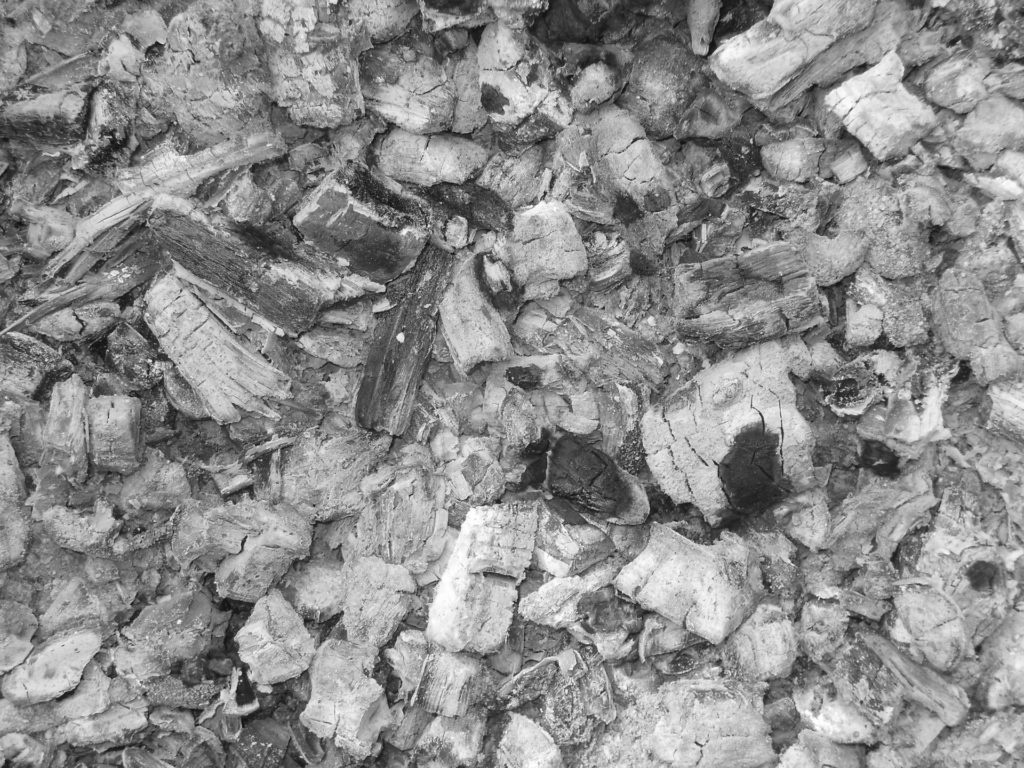
- Milk infusion. They are used, as a rule, for the defeat of indoor plants. Sour milk (you can take whey or yogurt) is diluted with water. For 1 part of milk - 3 parts of water. Flowers are sprayed with this mixture 2-3 times a week.
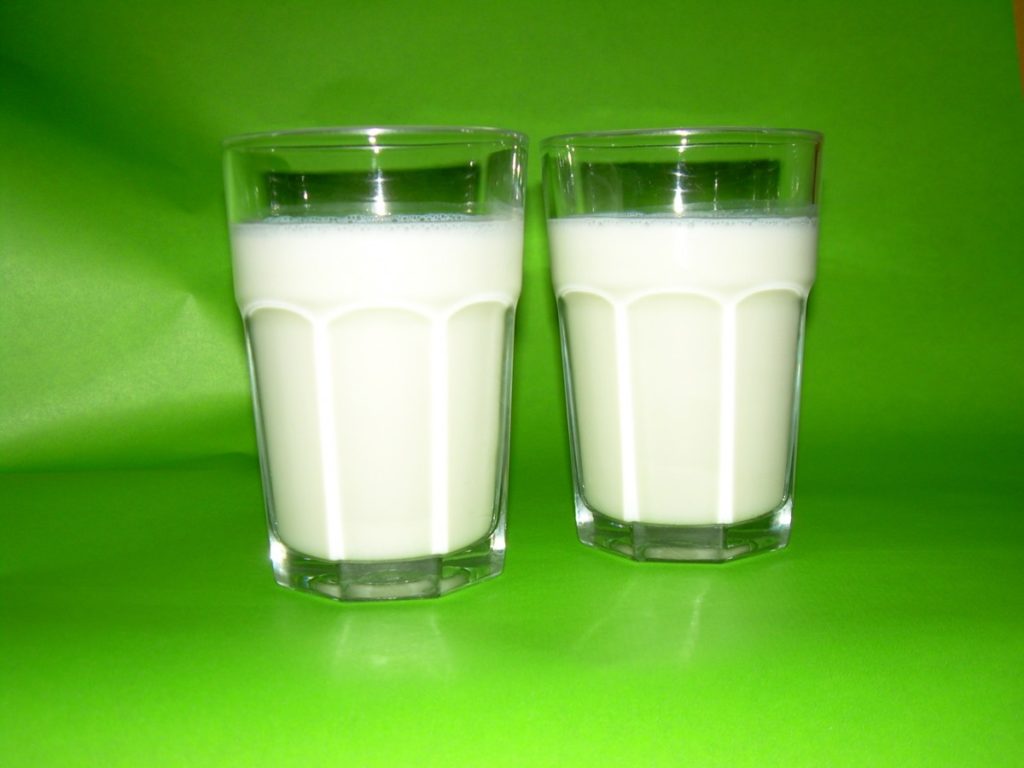
- Mustard powder. 2 tbsp.tablespoons of dry mustard are mixed in 10 liters of water. After a day, the liquid can be used for spraying. You can use such a remedy in one area within 10 days.
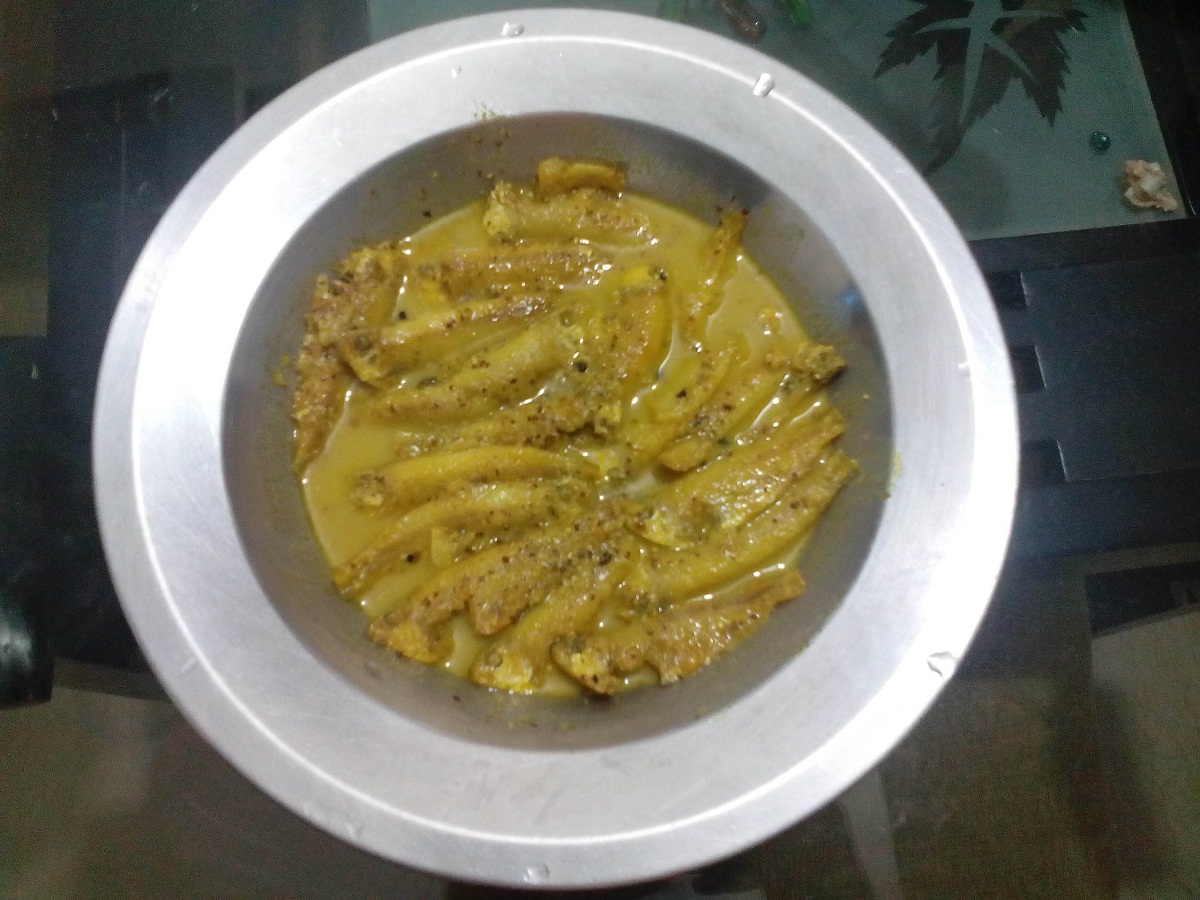
For answers to questions: how to choose a suitable recipe or a product from which company and where to buy, it is better to contact a competent specialist.
If you have experience using the tools described in the article, or you want to share your author's recipe for fighting powdery mildew, tell us about it in the comments.












